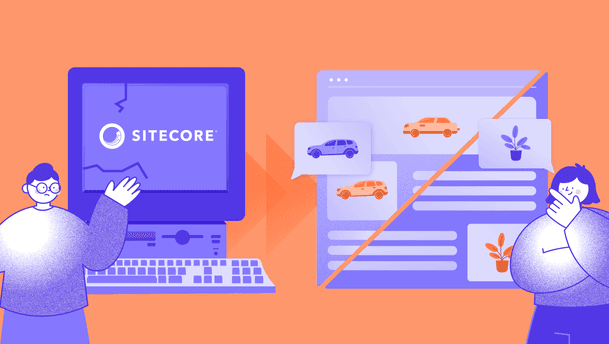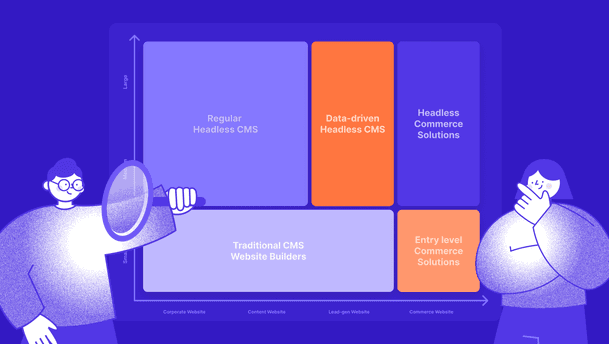Introduction: Rethinking personalization in the composable era
For today’s digital agencies, delivering high-performing, lead-generating websites isn’t just about building fast and flexible front-ends. It’s about creating truly adaptive experiences. Tech leads and product owners are increasingly expected to implement website personalization, landing page personalization and A/B testing to deliver data-driven content strategies that move the needle for their clients.
Composable architectures promise freedom of choice, but assembling the right stack is a growing challenge. The challenge is how to keep it lean, affordable, and easy to maintain. Many teams default to multi-system setups for data-driven content strategies, combining a headless CMS with a CDP and a personalization engine. While powerful, this model can quickly become complex, expensive, and hard to iterate on.
This article explores a smarter alternative: data-driven headless CMSs that bring content and data together in one platform. For tech leads looking to streamline their architecture, move faster, and deliver more personalized lead-gen experiences, without the overhead, this new generation of CMS offers a compelling path forward.
Avoiding the Frankenstack trap in composable

You’ve probably heard it a dozen times by now: “We’re moving to a composable platform.”
Sounds modern. Ambitious. Strategic.
But what many agencies and clients don’t say out loud is that they’re often building “Frankenstacks”; complex stacks made of multiple best-of-breed systems, patched together in the hope of creating an easy-to-use and high-performing digital solution.
When Mary Shelley wrote Frankenstein, she told a story about creating a powerful being made from parts that didn’t quite fit. The result was unpredictable and hard to control.





